What type of hydraulic jack do I need?
How to match your job requirement to the massive range on offer.
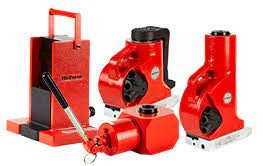
A selection of hydraulic jacks from Hi-Force. Image Hi-Force
What are the two most important things you need in a hydraulic jack?
We think that these are the two basics. The obvious requirement is a hydraulic jack that will lift your load. You either must know the load and buy the right one or you accept that you may not achieve enough load to do the job. You could always hire a jack to try it. If you can’t achieve what you are trying to do, you might have to confront whether you are applying the load in the right place or if the method is flawed. Hydraulic jacks can generate massive loads so you can’t go on and on loading up something, hoping it will come right.
Maybe the bigger requirement is that you can apply the load correctly and safely. That means transferring the load to the object or component you are moving without damage or danger plus taking up the reaction safely and again without causing damage.
What certification and approvals apply to a hydraulic jack?

Combined CE and post Brexit UKCA marking
Hydraulic jacks are very specialist tools for jobs and quite a lot of skill can be required in their use. “Lifting gear” is inherently specialist. Just because a unit is cheap and on the web doesn’t mean that it is properly certified. What standard should you look for?
What is the range of hydraulic jacks that are available?
Let’s look at a few different types and how they are used. You may need to search to find the right jack for you. There is no “one size fits all.” Note also that there are lots of special tweaks on hydraulic jacks for particular industries or tasks. We have mentioned a few, but these specials are a massive business.
Remember, some applications still use mechanical jacks in place of hydraulic at low tonnages, but we will look at hydraulic variety. Think some car jacks or jacking up trailers for perfect mechanical jack applications. These a still widely used. The rail industry also uses mechanical jacks. Don’t dismiss them completely, but our discussion is hydraulics because that is what we do.
Bottle and integrated jacks are the biggest sector.
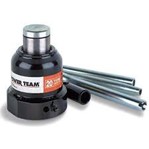
Power Team 20 ton hydraulic bottle jack of conventional configuration

Tangye Hydramite integrated hydraulic jack integrates the parts into a machined or cast body
Bottle jacks and integrated jacks are a massive sector of the hydraulic jack market. What are the basic for bottle and integrated jacks and where do you start?
Air powered bottle jacks
These have the addition of an air driven pump, often leaving the hand pump in place as a backup. Here you can connect shop air to the unit to generate the hydraulic pressure. Because of the extra size, these are often mounted on a two-wheel cart.
Low Height Compact Jacks.
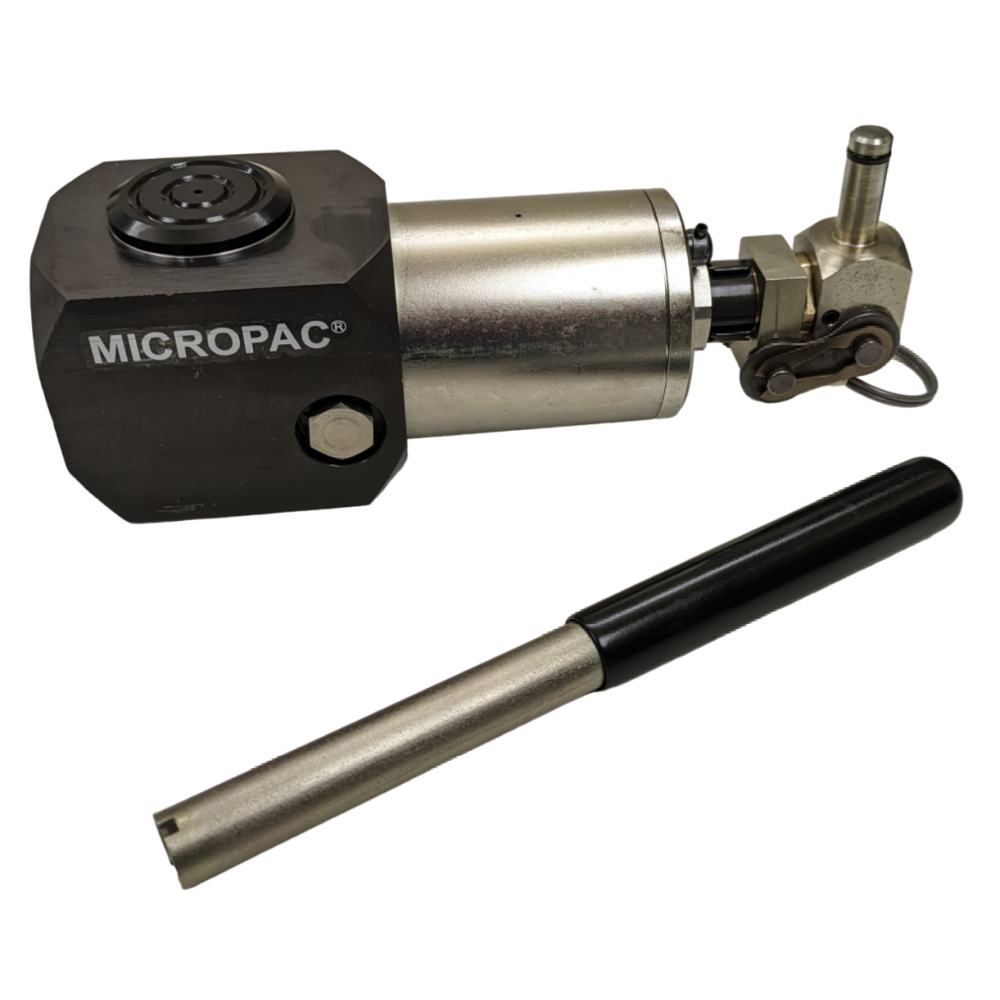
Ultra compact low height jacks like our own JAK10 fit in a pocket
Low height compact jacks are a variant on the bottle jack that provides a great solution for anybody who just can’t work with the high closed height on a bottle jack. It uses a short hydraulic cylinder then the reservoir and hand pump are at 90 degrees, parallel with the base. For people like machine movers or shipyards, low lift hydraulic jacks are very widely used. You have, for example, a closed height of 76mm and a lift of 35mm up to 10 tonnes on our own JAK10 unit. Tonnages run up to 30 tonnes. A low height jack is invariable very compact, so it is commonly used as a toolbox tool by specialist fitters and technicians. Our JAK10 is often carried in a pocket.
Failsafe jacks;
can be provided for a bottle jack or a low height jack by extending the rod with a load bearing male thread and using a collar that is screwed down once the jack has lifted its load. They are low tech and good engineering, but the extra rod length may be a problem, depending upon your application.
Hollow jacks;
have a hole through the axis of the cylinder, effectively allowing the jack to exert a tensile load instead of a compressive load.
Toe Jacks.
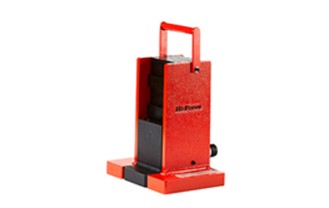
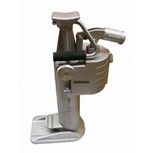
Two typical hydraulic toe jacks, images courtesy of Hi-Force and Simplex. Hi-Force unit is for machine lifting.
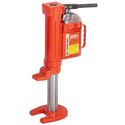
Power team heavy duty toe jack provides a very rigid configuration with reduced side loading
Toe jacks offer a fix where a user can’t even tolerate a closed height of 76mm or you need a higher lift than a compact jack.
Jacking solutions using 700 bar cylinders, hoses and pumps.
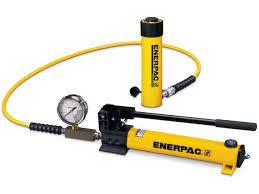
A typical pump, hose and ram set from Enerpac. Look at Hi-Force as well.
Hydraulic cylinders, hoses, and pumps from the 700 bar ranges offered by all the majors and peripheral manufacturers have a place in hydraulic jacking. Why look at them?
Integral 700 bar 10 tonne cylinders/pumps
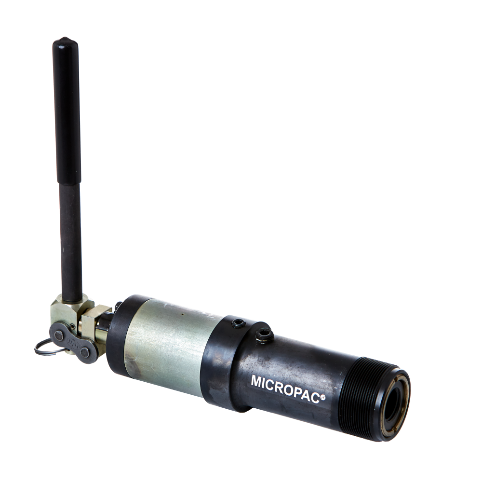
Integral cylinder/pump hydraulic compact jacks are a great option if you want the flexibility of mounting a press frame or production fixture onto the industry standard thread on the 2.250-14UNS external thread on the body diameter of a 10 tonne 700 bar cylinder but don’t want the bulk or complication of a cylinder plus hose plus pump. This is a slightly different configuration to compact jacks like the JAK10 where the ram is at 90 degrees to the reservoir axis. The MV10 keeps everything on the same axis. Our MV10 has been used for years in nut splitters, flange splitters, chain link presses and other production equipment. Using this pump on smaller batches or as a standby does give you the option to swap from manual across to an electric or air driven pump and catalogue cylinder once volumes increase. Your press or tooling will be the same. Our unit runs to 700 bar and 10 tonnes, has a very neat integral pump, a built-in relief valve to limit the force it can exerts and it offers a sealed hydraulic system for use in any orientation. Read more for this product.
Pancake Hydraulic Jacks
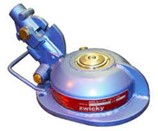
A specialist railway industry pancake jack from Torrent Trackside
Pancake hydraulic jacks are invariably configured as a cylinder, hose, and pump. Managing to achieve a reservoir and hand pump integrated into a single very flat body is very tricky as a one piece. We are happy to be corrected. The rail industry uses hydraulic “pan” jacks to lift rails without removing much or any ballast. Again, a special application for hydraulic jacks.
Trolley Jacks
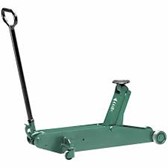
5 tonne conventional trolley jack by Compac. Image Spaldings
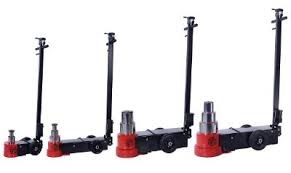
An alternative trolley jack configuration from Chicago Pneumatic
Trolley jacks are a specialist variant on hydraulic jacks. What makes them special?
Is a big brand hydraulic jack worth the money?
The USA was the home of 700 bar hydraulics and a massive market on hydraulic jacking. The UK was strong as well and the home of firms like Tangye. A lot of this kit is still very rugged and serviceable for long term users, but nowadays at a high price. There is a massive range of cheap kit in the market place of varying quality. Our Pump Shop Pro and Sarum Hydraulics philosophy is that Professional people need Professional kit. We would always pay for decent equipment, as we need it to work year after year and not be worn out, broken or corroded. It’s your choice.
How to keep your hydraulic jack ready for use?
Look after it when you put it away. If it needs a seal replacing, get it done. The big players have approved service firms like our friends, Shaw Hydraulics. Never overload or misuse your jack for something it isn’t meant to do.
Enjoy using a Micropac JAK10 10 tonne low height jack if that is what your job needs. Or pick the jack that does fit the bill. Or HIRE one if that is a good alternative.
Talk to us if you have an application for our JAK10.
Corrections and copyright.
As always, we are happy to be corrected. All copyright images are acknowledged.
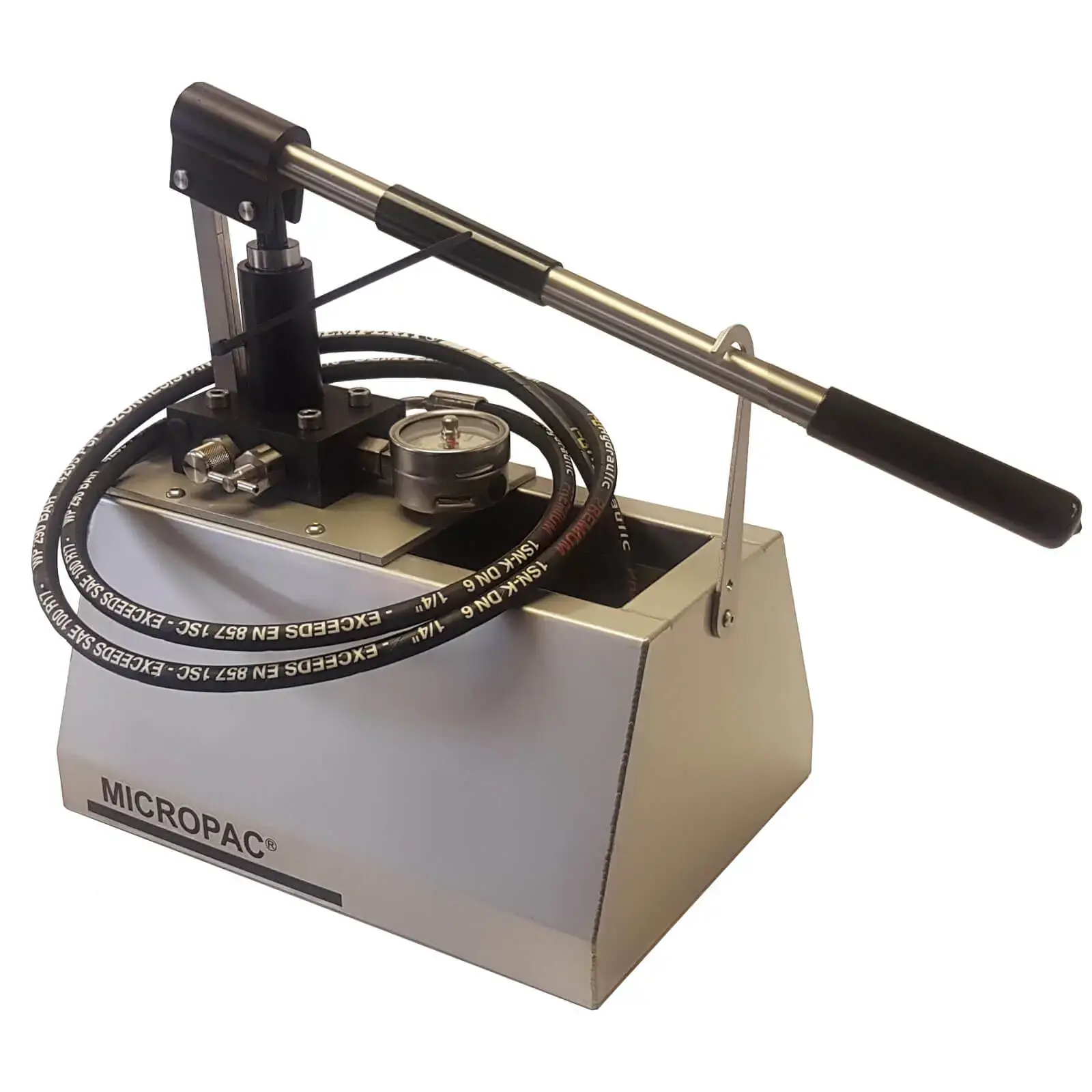
Leave A Comment